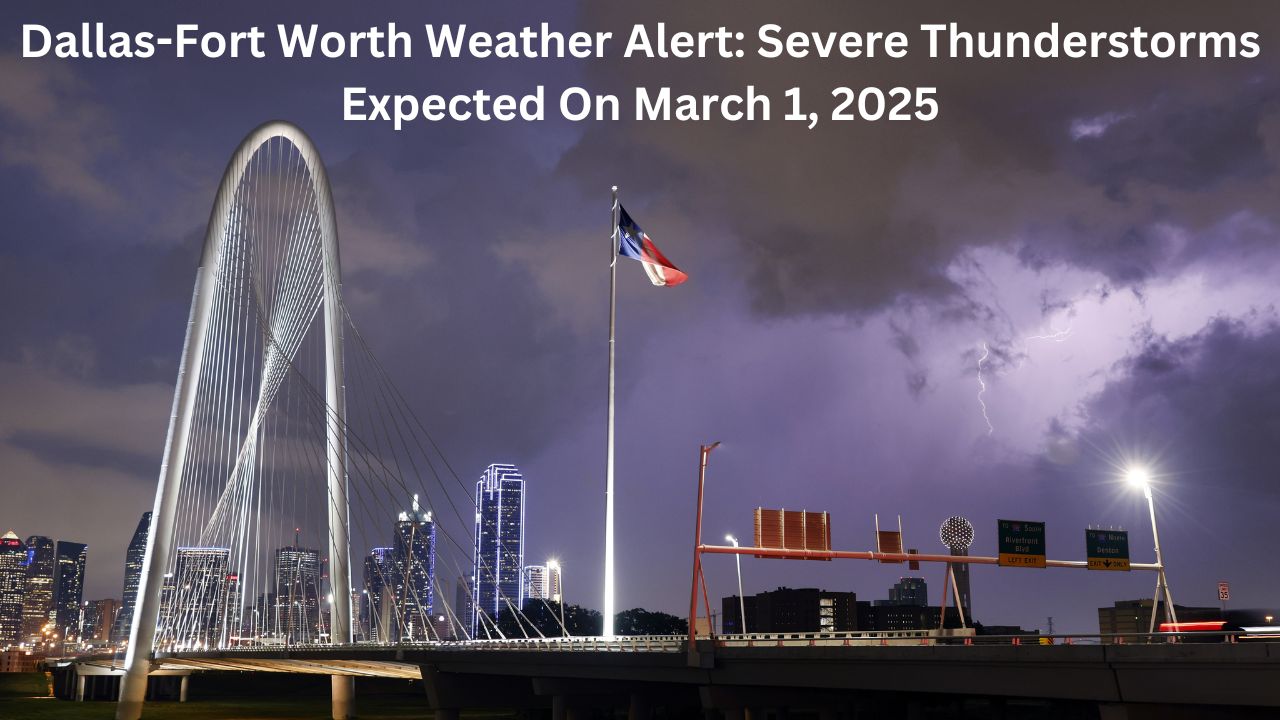Dallas-Fort Worth Weather Alert: Severe Thunderstorms Expected On March 1, 2025
The Dallas-Fort Worth population needs to prepare for dangerous thunderstorms during the day of Monday, March 1, 2025. Meteorologists anticipate these storms will produce three severe weather effects including substantial hail stones together with dangerous wind gusts and significant precipitation.
Various counties throughout the Dallas-Fort Worth region have received alerts from the National Weather Service requiring the public to remain aware of the situation while they prepare safety measures.
Weather Forecast
The severe weather conditions will start in the early afternoon and might continue during the evening hours, according to meteorological predictions. Strong thunderstorms will develop because a powerful cold front is approaching the region to clash with the existing warm, damp air layer in the atmosphere.
The joint impact of these meteorological factors establishes perfect circumstances that lead to the development of severe thunderstorms.
Dr. Emily Turner from the NWS emphasized that storms bring substantial risks of hail as large as 60 mph wind speeds. People must stay alert and prepared to handle sudden weather changes.
Severe Thunderstorm Watch
A severe thunderstorm watch becomes active between 1 PM and 9 PM on March 1 for Dallas, Tarrant, Collin, and Denton, along with their adjacent counties. Thunderstorms are predicted to generate hail bigger than one inch in diameter, and winds stronger than 58 mph will form during this period.
The public needs to follow local news broadcasts together with weather applications since meteorological conditions may change unpredictably. Growing numbers of lightning strikes are projected to emerge throughout the storm area, thus increasing danger in open spaces.
Hail Damage
These thunderstorms generate massive hail chunks, which are one of their main dangers. Previous regional storms have shown large hail reaching the size of golf balls and bigger.
The forceful impacts of hail threaten to harm both personal vehicles and cars and roofs and agricultural crops; hence, residents must take precautions.
Wind Damage
Different from hail damage, high winds represent an important hazard. Very strong winds beyond 60 mph have destructive power to pull down trees while they break power lines and generate hazardous debris.
The local emergency response teams develop plans to deal with extensive electricity breakdowns, so residents need to maintain emergency power supply systems.
Flash Flooding
The powerful thunderstorms produce heavy rainfall that could quickly flood low-lying ground spaces, particularly at creek and stream locations. The NWS has issued reports showing that floodwaters will rise swiftly; thus, residents should practice caution while traveling through dangerous areas.
Safety Precautions
The public needs to follow multiple safety measures before the storm arrives:-
- You should monitor weather alerts through local news broadcasts or the NWS website, together with weather apps.
- Place Loose Items Both Inside and Secure Everything Outside to Prevent Them from Becoming Wind-Borne Objects in High Winds.
- Establishing an emergency kit containing vital materials such as water alongside dry foods plus emergency flashlights with batteries matched to first aid necessities.
- Electronic devices should be charged beforehand to maintain preparedness against power outages, and backup power supplies need to be available.
- Your household safety requires you to identify a secure area inside your house, like the basement or interior rooms that serve as storm shelters.
Community Response
The local emergency response teams maintain readiness for any storm-created situations that may require immediate help. The emergency teams of fire and police departments finalized their plans and boosted their workforce numbers because of potential severe weather reactions.
The public shelter system will start operations if conditions deteriorate, especially for people who require help during blackouts or flooding.

